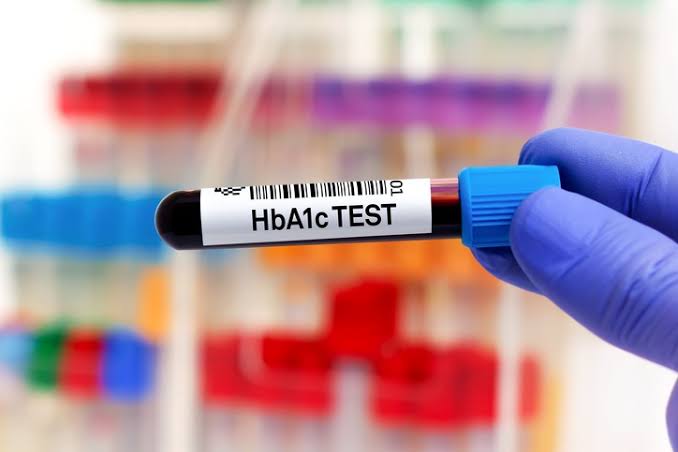Know the purpose of a Glycosylated Hemoglobin Test?

To determine how much sugar has been in your blood over the last two to three months, a lab test called glycosylated hemoglobin is initiated. As part of physical examinations, it is used to identify diabetes and prediabetes and to determine the effectiveness of treatment.
No physical signs are initially present when the blood sugar level is high. The internal organs, however, have already suffered quite a bit from the high sugar levels. It’s crucial to maintain control over your blood sugar levels because sugar is one of the most addicting chemicals. A glycosylated hemoglobin test is a test used to monitor blood sugar levels on a regular basis.
What is glycosylated hemoglobin?
Glycosylated hemoglobin is hemoglobin that has chemically bonded to sugar. All three sugars—galactose, fructose, and glucose—have a high likelihood of binding to hemoglobin, though fructose and galactose do so more quickly due to the fact that glucose is the primary fuel for human metabolism.
What is glycosylated hemoglobin?
The blood sugar level is determined using a glycosylated hemoglobin test (A1c), also referred to as HbA1c. It is mostly used to check for diabetes and ascertain how many months the person has had it. The amount of glucose in the blood is precisely measured.
Your blood’s hemoglobin becomes tethered to this glucose, which results in health problems. The amount of glucose will affect how much it sticks to hemoglobin. This test assists in determining the quantity and duration of glucose attracted to hemoglobin.
As was already established, when diabetes first affects the body, there are often no obvious signs. As a result, there are a number of situations in which your doctor might advise that you get an A1c test.
Understand your result
Following a test to determine whether you have diabetes, you should learn the following fundamental facts about the percentage of blood sugar in your body:
- You don’t have diabetes and your blood sugar level is normal if the results are less than 5.7%.
- A score of 5.8% to 6.4% indicates that the person is prone to having this ailment if the proper actions are not taken. This points to pre-diabetes.
- If it is 6.5% or more, diabetes has been diagnosed in the patient.
- A glycosylated hemoglobin test is required to monitor your health and make sure you are not identified with disease too late. Once you are aware that you have diabetes, there are several things you may do.
Purpose of glycosylated hemoglobin test
- A glycosylated haemoglobin test is performed to keep track of how well your diabetes therapy is working by routinely checking glycosylated hemoglobin.
- Test for diabetes as part of regular health checks and in people who are at high risk of developing it.
- Diabetes can be detected and verified using a combination of additional tests if blood sugar levels have been raised for a significant amount of time.
When should you get the glycosylated hemoglobin test done?
When the body is initially diagnosed with diabetes, no obvious symptoms appear. As a result, there are some circumstances under which your doctor will suggest that you get a test done. If you have the following symptoms you can get your glycosylated hemoglobin check:
- When you experience blurred and hazy vision
- Whenever you experience extreme fatigue and sluggishness
- When you lose motivation and are negative
- If your urinating pattern changes and becomes excessively frequent,
- If you experience constant thirst
- If you are struggling with obesity
- If you or a family member has diabetes. Hereditary factors can contribute to this illness.
- If you are experiencing any heart problems.
- Having a high blood pressure level
- If you don’t work out and maintain yourself in shape
Importance of glycosylated hemoglobin checkup
Getting a regular glycosylated hemoglobin check-up helps you to:
- Calculations conducted in the two months leading up to the test are used to determine the results.
- This test informs the patient of the potential presence of this ailment, enabling them to take the necessary safety actions to protect their health.
- Patients can use this test to check their blood sugar levels frequently while continuing to follow their diet and other daily routines. Furthermore, since you can regularly check your blood glucose levels, it prevents any unanticipated problems in the body.
- There are no conditions that must be met prior to doing a glycosylated haemoglobin test. The results of this test are also unaffected by changes in the body or emotions.
Read Also : 5 Reasons Custom Printed Stand-Up Pouches May Be the Best Choice for Your Food Products
Conclusion:
A glycosylated hemoglobin test is important and useful for tracking your blood sugar levels on a regular basis. This test counts the grams of hemoglobin with glucose linked to them in the blood. It is an important tool for managing diabetes since it gives a picture of average blood sugar levels over the previous three months.
No one would ever desire to have diabetes due to the numerous restrictions and precautions that are required. So be careful to look after your health and take good care of yourself.



